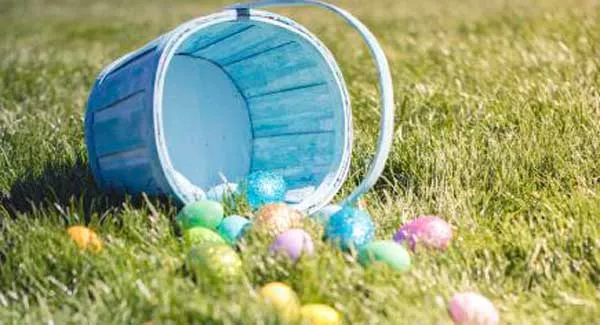More than 17m Easter eggs were consumed in Ireland last year, according to recycling industry body Repak, which is encouraging the public to learn where to dispose of their packing this weekend.
Repak has advised that most of the packaging on Easter eggs is recyclable, and the cardboard and hard plastic covers can be disposed of in the recycle bin.
However, the soft plastic used for sweets and chocolate wrappers, must be disposed of in the general waste bin.
The non-for-profit body said foil can be recycled, but that it must be clean, dry and loose.
Soiled foil must be dumped in the general waste bin.
Repak conducted a survey to coincide with Easter weekend, which finds that Irish residents are expected to recycle 39,020 tonnes of packaging recycling this year.
Repak says this would be enough to fill the Aviva Stadium to its roof almost twofold.
The survey of 554 Irish residents, conducted earlier this month, found that 41% of respondents say their recycling bin will already be full before this weekend, with 37% stating they receive chocolate eggs before Easter.
While 37% said that ensuring the packaging waste is recyclable is of most priority to them when buying an Easter egg, 35% said they would still buy their favourite chocolate Easter egg if it was accompanied by too much packaging.
The survey found that 28% of Irish residents are expecting to buy eight chocolate eggs or more this Easter, but at least 1 in 10 are unsure that they are correctly recycling the Easter egg packaging.
Séamus Clancy, CEO of Repak said it is calling the public to increase recycling efforts over the Easter holidays: “By recycling better at home, you are supporting Ireland in reaching its future recycling targets. This Easter, make sure you know what can and cannot be recycled."
Meanwhile, the ISPCA is taking the opportunity to ask consumers to think about where their eggs come from.
An “End the Cage Age” exhibition - which seeks to highlight animal welfare issues for laying hens and other animals that are intensively farmed in cages - opened in Dublin’s CHQ building at 1 Custom House Quay yesterday and runs until Tuesday.

The ISPCA said the exhibition will provide information to members of the public about the living conditions of intensively farmed animals, in particular laying hens, in Ireland and across Europe.
It said more than three million egg-laying hens are farmed per year in Ireland, and more than half of them, nearly 1.9 million (54%) are caged.
The ISPCA said each bird living in these conditions has a space only slightly larger than an A4 sheet of paper and that in overcrowded conditions they have a lack of space to exercise, fly, flap their wings, or dust-bathe.
Egg producers and retailers are required to label their egg packaging in a way that displays how a hen has lived and laid her eggs.
The number 1 means that the egg is free range, 2 means originating from a barn, 3 for caged hens and 0 (zero) for organic.






